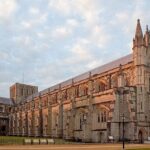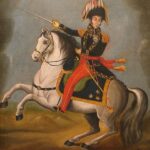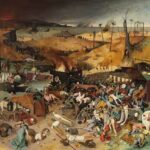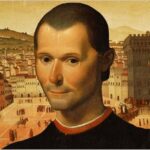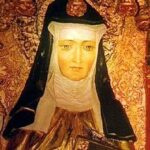![]()
John Dunstaple (c.1390-1453), once more often spelled Dunstable, was one of the most influential composers of the early fifteenth century. Dunstaple’s persona took on such a mythological character among later authors that it is this awe which is most discernible today, rather than any underlying facts.
Indeed, few details of his life are known, and much of his most significant music is not securely attributed. Based on comments from Tinctoris and other contemporary authors, Dunstaple was mistakenly believed by later Renaissance writers to have invented counterpoint! Although these fanciful aspects of his reputation can be received with some humor today, Dunstaple was certainly one of the leading English composers of his day, and one of those principally responsible for inspiring the integration of the “English Countenance” style into pan-European contrapuntal technique. That style is based on a relative abundance of thirds, or what we might call sonorities anticipating major tonality, in the descant writing then current in England.
Dunstaple may have traveled to Burgundy before 1427, and came to be identified with the adoption of thirds-based harmonies on the Continent. Today it is difficult to separate his work from such contemporaries as Lionel Power (c.1380-1445), and indeed the two surviving mass cycles thought to be by Dunstaple may be by Power instead. Dunstaple and his English contemporaries are, however, thoroughly associated with the first examples of the cantus firmus (where a single melody conditions the rhythm & harmony of each movement) mass cycle, a genre which was soon to become the leading format for musical creativity. Besides these early cantus firmus works, a form in which he certainly wrote at least some smaller-scale settings, Dunstaple wrote isorhythmic motets as well as many more modest antiphons based on the descant style. The bulk of his music is in three parts, while most of the isorhythmic motets are in four.
Dunstaple left at least 52 attributed works, although there continues to be confusion between his work and that of Power and others. Although it is believed that Dunstaple wrote secular music, no music using vernacular texts is securely attributed. The popular song O rosa bella, once thought to be by Dunstaple (and so included in this discography), is now securely attributed to John Bedyngham (d.1459/60). Dunstaple’s reputation as a mathematician and astronomer (we might say astrologer today) added to his contemporary stature. His work in these fields is regarded as competent, but not original, such that among the disciplines of the quadrivium, it was music which was his real creative outlet. Although Dunstaple’s actual role in developing the harmonic style leading to the High Renaissance is not considered as important today, his music continues to make a strong impact among listeners for its sense of proportion & solidity.

